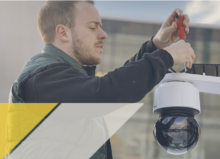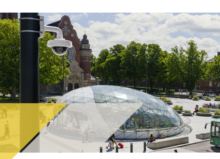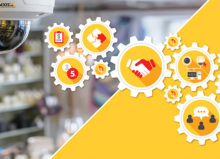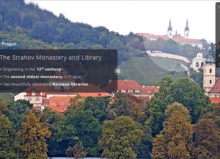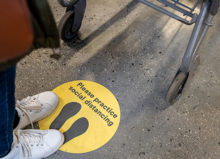Passengers in focus: how video and connected technology are transforming public transport

When Deutsche Bahn presented its S-Bahn train of the future, it delivered a 22.5 meter prototype vehicle that could be individually adapted to meet the real-time needs of travelers. This included adjustable standing and seating that can be changed to meet capacity requirements, free up extra space for bicycles and scooters, and provide additional wheelchair and stroller accessibility when needed – all at the touch of a button.
IdeenzugCity is German innovation at its finest and must be seen to be fully appreciated. But what informs these amazing transformations? Put simply, video and connected technology.
Insights to improve passenger comfort and confidence
To be more precise, it’s actually the passenger insights that video analytics provide. For many years, public transport authorities (PTAs) and service providers have used video surveillance to help improve safety and security throughout their operations. But these days, those same systems can do so much more. With advancements in both artificial intelligence and the processing capability of modern cameras, it is now possible to deploy video solutions with advanced deep learning analytics that can reliably distinguish objects, count people, detect crowds, estimate occupancy, analyze passenger demographics, and track their movements for statistical analysis.
All of this video metadata can be transformed into actionable intelligence for PTAs and service providers – both intelligence that informs long-term service and future infrastructure planning, plus real-time actionable intelligence for today’s public transport networks. And while travelers may have to wait a little longer for the S-Bahn of the future, these types of video analytics are already being used to improve passenger comfort and services today.
For example, German-based Berliner Verkehrsbetriebe (BVG) improves passenger comfort and satisfaction on their double-decker buses by providing travelers with vehicle occupancy information derived from specialized Axis cameras with sensors for counting passengers. When required, messaging, signage or push notifications can then recommend upper-level seating for optimized passenger distribution.
Another example is Danish rail operator DSB, who now offers an app that shows travelers which services and carriages have space for physical distancing – a service which reportedly helped increase ridership by 6% during the first week of lockdown easing.
Insights to optimize efficiency and on-time performance
Passenger insights can also be used to minimize service disruptions and improve overall efficiency. Disruptions are not only costly for service providers, but they increase travel time for passengers and impact traffic congestion on city streets.
Yet maintaining a steady flow of vehicles to meet current and predicted passenger occupancy levels is not an easy job. It requires careful planning, precision timing and efficient passenger boarding to maintain on-time performance. However, using the insights derived from video analytics on board rolling stock, PTAs and service providers can provide passengers at the next stop with real-time occupancy information. This can be used to guide them to the train carriages with available seating, as well as spaces for wheelchairs or strollers. This insight saves precious time and keeps service rolling on schedule.
Insights to inform urban mobility planning – today and tomorrow
Passenger insights can do even more than provide real-time situational awareness and optimize on-time performance. By sharing these insights more broadly with other “smart city” stakeholders, urban planners and transport providers can ensure sufficient taxi, scooter, or bicycle availability for “last-mile” transport.
And it’s only the beginning. New technology and insights will continue to drive the transformation of public transport – increasing ridership and improving urban mobility both today, and for the S-Bahn of the future.
Source: Axis Communications






